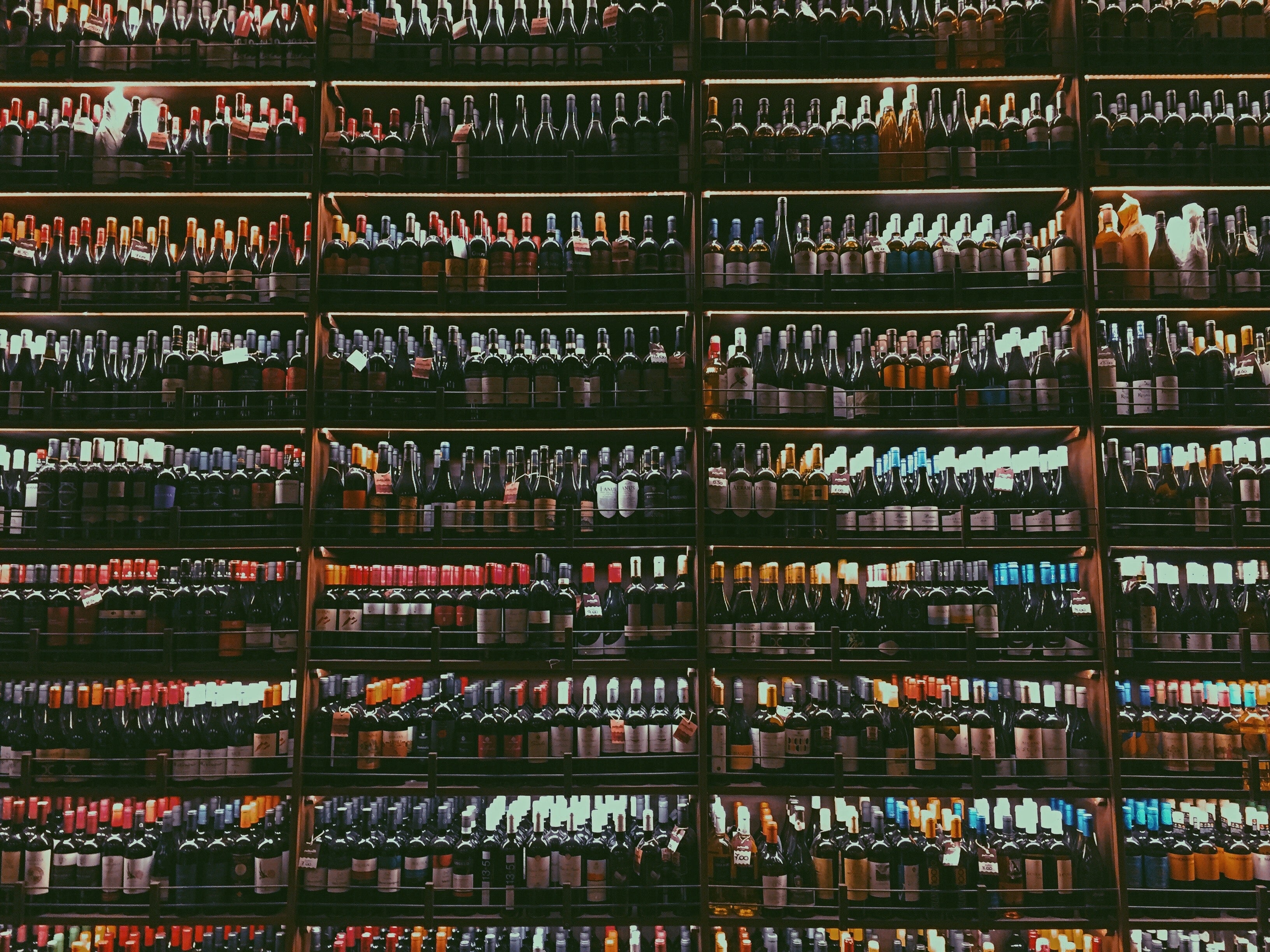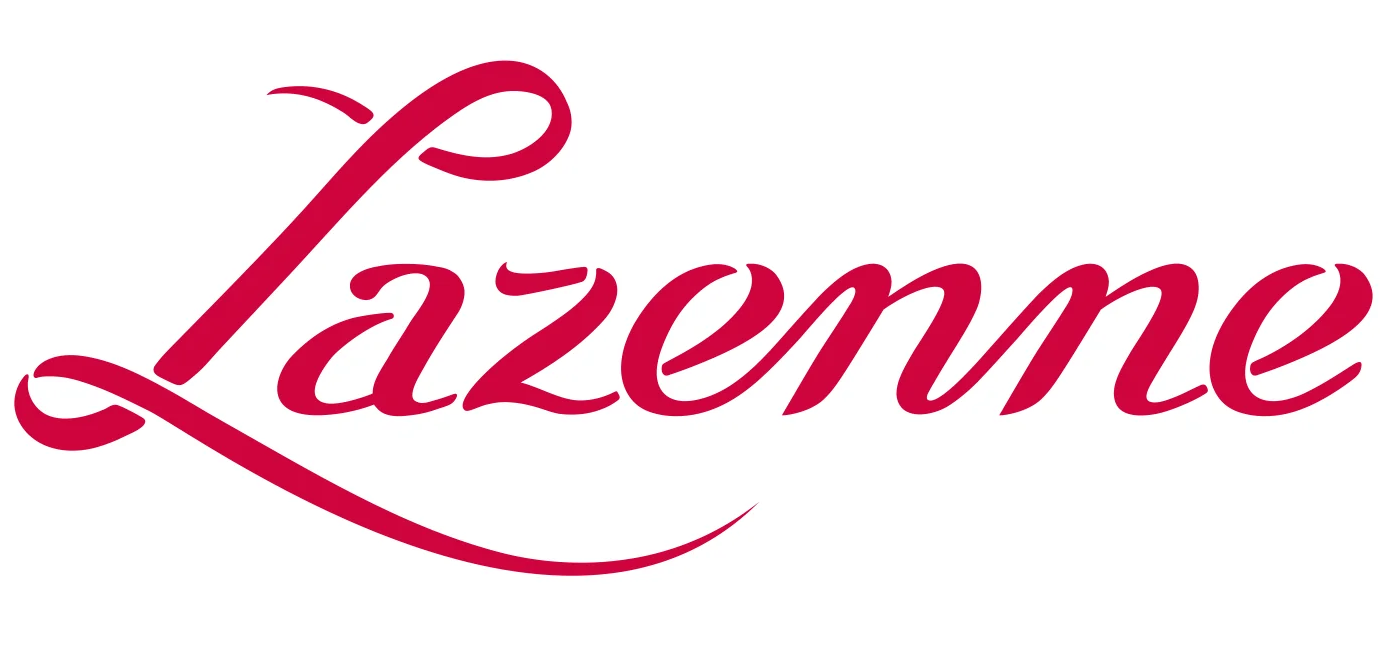
The Only Guide You'll Ever Need To Shop For Wine
Is there any shopping decision more confusing than choosing a bottle of wine? The wall stretching out in front of you, laden with hundreds of different bottles, each with different prices, labels and descriptions. Sure, there are 10-12 different brands of cereals and just as many, if not more, choices of chocolate bars, yoghurts and other products, but this pales in comparison to the fragmented, arcane world of the wine isle. Whether you're shopping in a supermarket, an independent wine store or just your local corner shop, it can be a shot-in-the-dark as to whether you end up with something you actually like or not. Worse still, you rarely, if ever, learn where you went wrong when you come away with something truly awful.
We've read articles online full of misleading information, over simplifications and often just bad advice; we intend to remedy this. Whilst there really isn't an easy way to assimilate all the information you'd need to choose wines like a professional (sorry!) there are certainly some simple tips and facts that will vastly improve your understanding of the 'Wall of Wine' in front of you. We've put together the 5 most relevant, and often neglected, points for you, so read on and head to the wine store with a little more confidence!

The Wall of Wine - What am I looking at?
A good place to start is understanding how and why the wine in front of you is laid out the way it is. Most retail outlets that sell wine tend to try and divide and organise wine either by geography or grape varieties. There's an important distinction here, which I'll go through in more detail later, but whatever the lay-out, there will be some general patterns.
Eye-level selling - The wines the store wants to sell the most of will be at eye-level. This could be stock they're trying to clear or, more likely, it's the product with the most margin. These are often priced in the medium-range and include a lot of private labels, which are wines the retailer has sourced themselves from a winery and applied their own label to.
Retail psychology - Expensive wines tend to be placed at a higher level, whilst the cheaper wines tend to be placed low down. This is to mirror the act of 'reaching up' or 'stooping down', quite literally aiming higher or lower, and is another bit of retail 101 applied to wine.
Temptation, temptation - Wines that are heavily discounted (more on this later) will often have pride of place at the ends of the isle, or even on floating islands.
Why's this important? Good quality wine is rarely distinguished by its place on the shelves, which are more a reflection of the commercial aims of the retailer. Good quality wine can be found at different price points, from different grape varieties and from across the world. Understanding your own personal choice begins with disregarding what's immediately in front of you! Sorry, Tesco.

Grapes vs Regions – What's in the bottle?
Ok, so we know what the retailer wants us to buy, but we're here to make our own informed choices. So what's next? As we mentioned, most wine is split by either grape varieties or regions, so let's look at the two options separately.
By grape variety – This is how most 'New World' wines are organised and often labeled. New World wines hail from Australia, New Zealand, Argentina, South Africa... basically anywhere that isn't Europe! As these wine industries are relatively young, they aren't encumbered by the rules and regulations of European regions and can produce whatever they prefer. As a result, it's important to look at the label and make sure you're buying the grape variety you want, as many producers will have several wines from the same region, made with different grape varieties or blends. It's also worth noting that despite the fact the label may say, for example, “Sonoma Coast Pinot Noir”, usually only 85% of it has to be Pinot Noir, and only 85% of it has to come from Sonoma Coast; this can be as low as 75% in some regions! This leads to quite a bit of variation as 15-25% of another grape variety can change a wine a lot. Still, whatever the grape variety on the label, it will be the dominant part of any blend and will typically characterise the wine.
By region– This is how most 'Old World' wines are organised and labeled, typically including anything from Europe. As these regions have developed over decades and centuries, rules and regulations have been formulated that define not only the geographical boundaries, but also the permitted grape varieties, ageing requirements and labeling information. Chianti Classico is a firm, refreshing and medium bodied red wine made from at least 85% Sangiovese grown within a small Tuscan region because rules stipulate that it be so. Chambolle-Musigny is a softer, more perfumed red wine made from 100% Pinot Noir from the vineyards surrounding the village of Chambolle in Burgundy. It's a far more complicated system than labeling by grape variety, but conveys a sense of the wine being connected to the place. It's also a whole world of fun to explore when you start to learn it!
Why's this important? Wine style is so much more important than quality when it comes to enjoying a bottle of wine, but knowing what's in your bottle can be tough. Everyone has their preference and if you enjoy a full bodied, meaty Shiraz from Australia, then accidentally purchasing a light, juicy Beaujolais Noveau is likely to disappoint. Finding a grape variety you like and trying it from different places is a good choice, as you'll get to experience similar aromas and flavours with different nuances, textures and styles as you move around the world. Conversely, there's a lot to be said for finding a regional style, trying different producers and getting to know the region well. Following one of these approaches is a good first step to making informed choices and learning about wine along the way.

Discounts – Caveat Emptor!
These are so prominent in wine retail at the moment, they deserve a mention all of their own. Discounts are rife, and it's not uncommon to see big brands discounted by as much as 50%; the famous BOGOF (Buy one get one free) offer. However, not all that glitters is gold and whilst there are genuine bargains to be had during periods of sales, most discounts are quite calculated in nature and not what they appear to be. Most discounts fall into one of three categories:
Inflated original price – This is quite cheeky but very common. A supermarket creates a new private label wine, sourced from South Africa and with their own label on the front. They've calculated that they can sell the wine at €6.99 a bottle and still make a reasonable margin. Then someone has a brilliant idea. “Let's price it at €13.99 a bottle and discount it to €6.99 so everyone thinks they're getting a great deal!” The discount is permanent, and sales soar. We love a bargain as much as anyone, but there's reason to be cautious.
Older wines – Only a small number of wines really get better with age, with most being best drank within a year or two of production. Whenever a wine starts on that downhill slope and a retail store is stuck with a lot of it in stock, expect the discount labels to come out!
Moving stock – These are the ones where great wines can often be found for bargain prices. Sometimes, a wine just doesn't sell. Wine is subject to the whims of fashion, like everything else, and sometimes that beautiful Madeira will sit there unloved for years. These take a bit of practice to spot but after a while, you'll start to notice when they appear and then they're yours for the taking!
Why's this important? There are genuine bargains when it comes to discounts, but it pays to be cautious and to consider why a wine might be on sale. Is it a disingenuous ploy to trick a consumer into thinking a wine is more expensive than it really is? Is the wine likely to be a little over-the-hill and tired? Or is there a beautifully crafted but unfashionable bottle of Port with your name on it?

Price Points – Is a more expensive wine better?
So you know the sort of wine you're looking for and you've wisely ignored the obvious traps being laid out for you. The next question is, how much do you want to spend? Wines can vary quite dramatically in price, from just a few euros/dollars to thousands per bottle, although you're unlikely to accidentally stumble across the latter. So, what's the difference, and does it really matter how much we spend?
The short answer: yes! The long answer....
Production costs – Quality wine costs money to produce. In order to have healthy, ripe grapes with concentrated flavours, yields must be controlled (the amount of grapes grown in a plot of land) and ideally, are harvested by hand. The manual labour goes on into the winery and eventually, the wine is often aged in expensive oak barrels. Bottling lines, oak barrels, high labour costs... it all goes into the cost of a bottle of wine.
Fixed costs – Regardless of how much the wine is, there are fixed costs to consider. Taxes, logistics, duties and of course, margin for everyone who is involved in getting it from the winery into your hands. As these costs are mostly fixed, it stands to reason that the less you pay for your wine, the more these costs eat into the total. See the below infographic from leading UK wine distributors Bibendum, at just how this looks in the British market:

Why's this important? We have a tendency to look for bargains, when it comes to alcohol. When it comes to the luxury end of the market, money is no object and there is no relationship between how much you're paying and what you're receiving; it's pure supply and demand. However, at the more commercial end of the market, that extra 2-3 euros can make a big difference in the quality of the wine you're drinking. Drink less but drink better!

Style over quality – A personal choice
Our last point, and arguably the most relevant of all, is not to be intimidated by it all. Enjoying a bottle of wine is more about the style of the wine than the inherent quality therein, and the only true way to figure out what you enjoy and to expand your knowledge of wine is to drink more of it! That means more trips to the shop, more corks popped and more wonderful nights had around an open bottle or two. With that in mind, here are some closing tips on how to best choose a bottle of wine:
New experiences – Never tried a wine from Gigondas before? No idea what on earth Saperavi is? Well, you'll never know until you try it! Whilst working through the world of wine with a structure based on what you enjoy is a good idea, do try and throw a curve-ball in there from time to time. Variety really is the spice of life.
Independent stores > Supermarkets – This is one piece of advice that can't be stressed enough. Buying wine through independent wine merchants is well worth your while. Not only are the staff enthusiastic and helpful, but building a relationship with a wine shop is likely to pay dividends in the future, particularly as they get to know you. The selection is always better and you'll find yourself discovering the world of wine in a whole different way.
Stock up – If you find a wine you really enjoy, buy a couple of bottles. Better yet, buy 6! The nature of wine as a product of its vintage means that there's a limited number of anything, even from larger producers. Each wine will be subtly different to the one that preceded it, as the weather of that particular year has a role to play. Having multiple bottles of a wine allows you to see how it evolves over time, providing you've stored it well, of course!
Enjoy! - Wine, for all its nuances and complications is at heart, a refreshing drink best shared with friends. We hope this guide has steered you well, and you've chosen something utterly delicious. Drink, enjoy and let us know about it! Cheers!
Once you've found the right wine and want to get it home safely, make sure you do it properly! Check out the information on our specially designed wine luggage below:




Leave a comment
This site is protected by hCaptcha and the hCaptcha Privacy Policy and Terms of Service apply.